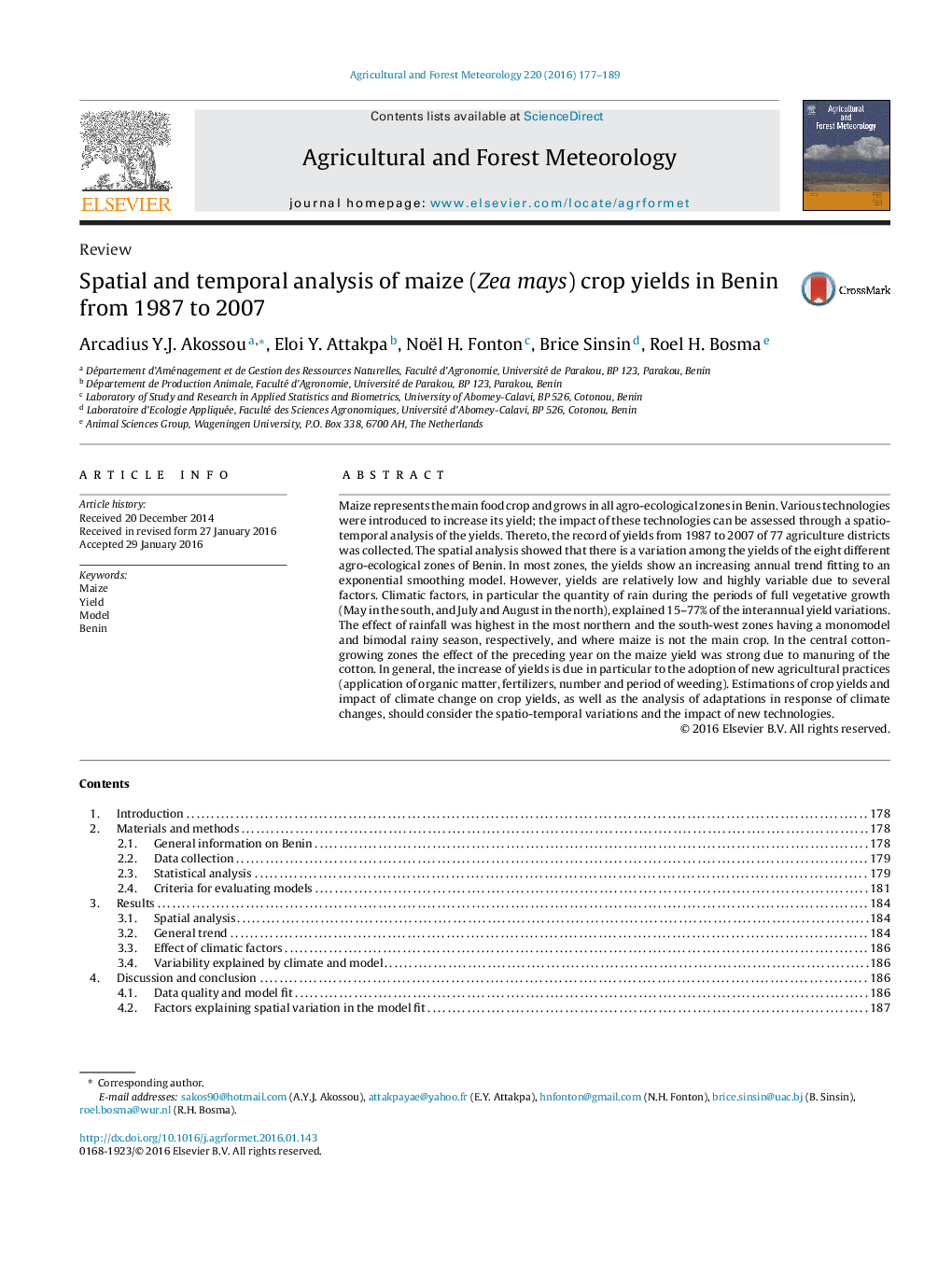| Article ID | Journal | Published Year | Pages | File Type |
|---|---|---|---|---|
| 6537013 | Agricultural and Forest Meteorology | 2016 | 13 Pages |
Abstract
Maize represents the main food crop and grows in all agro-ecological zones in Benin. Various technologies were introduced to increase its yield; the impact of these technologies can be assessed through a spatio-temporal analysis of the yields. Thereto, the record of yields from 1987 to 2007 of 77 agriculture districts was collected. The spatial analysis showed that there is a variation among the yields of the eight different agro-ecological zones of Benin. In most zones, the yields show an increasing annual trend fitting to an exponential smoothing model. However, yields are relatively low and highly variable due to several factors. Climatic factors, in particular the quantity of rain during the periods of full vegetative growth (May in the south, and July and August in the north), explained 15-77% of the interannual yield variations. The effect of rainfall was highest in the most northern and the south-west zones having a monomodel and bimodal rainy season, respectively, and where maize is not the main crop. In the central cotton-growing zones the effect of the preceding year on the maize yield was strong due to manuring of the cotton. In general, the increase of yields is due in particular to the adoption of new agricultural practices (application of organic matter, fertilizers, number and period of weeding). Estimations of crop yields and impact of climate change on crop yields, as well as the analysis of adaptations in response of climate changes, should consider the spatio-temporal variations and the impact of new technologies.
Related Topics
Physical Sciences and Engineering
Earth and Planetary Sciences
Atmospheric Science
Authors
Arcadius Y.J. Akossou, Eloi Y. Attakpa, Noël H. Fonton, Brice Sinsin, Roel H. Bosma,
